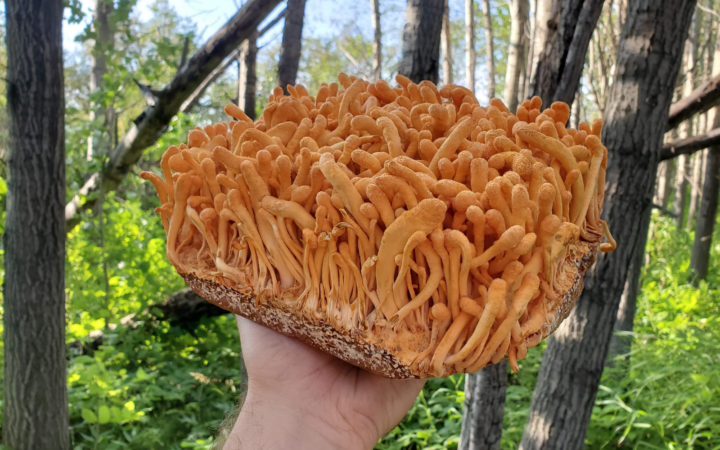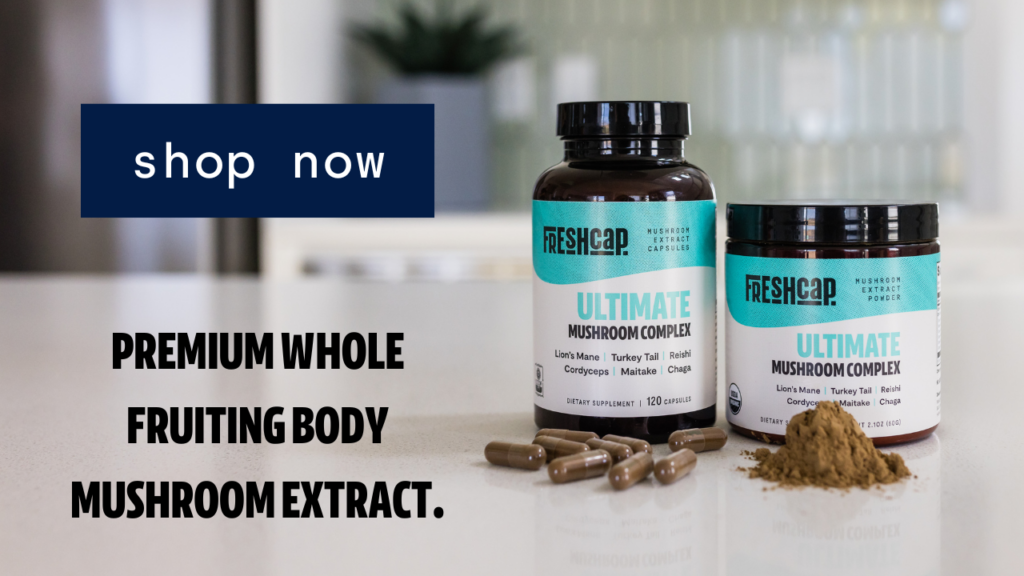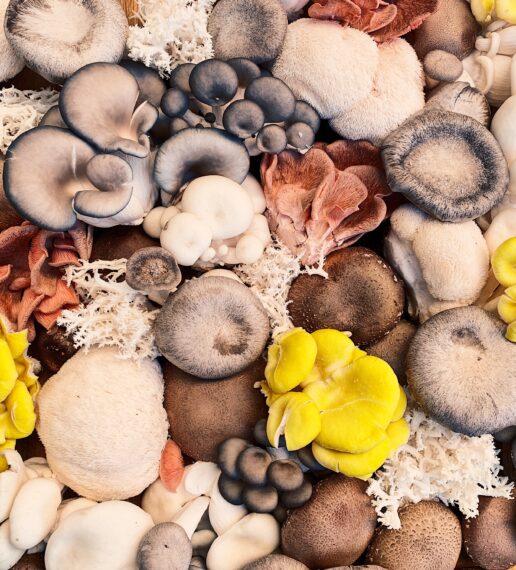Beginners Guide to Medicinal Mushrooms
Mushrooms can change lives*!
Sound like a bold statement? Not when you consider that cultures around the world have been using mushrooms as medicine for centuries.
Today, some of these same mushrooms are popping up in supplements and foods as science begins to recognize them for their functional benefits, including better sleep, more energy, less stress and stronger immunity*.
There are so many different types of medicinal mushrooms—trying to keep them all straight can be confusing. So we’ve put together this medicinal mushroom guide to help you decide which mushrooms are right for you and show you the best ways to start enjoying them!
What are Medicinal Mushrooms?
First off, let’s deal with the elephant in the room: Medicinal mushrooms aren’t the same as magic mushrooms. They won’t get you high and are 100% legal.
You’re also probably not going to see these mushrooms at the grocery store. A few might make an appearance at farmer’s markets, but most medicinal mushrooms are sold as supplements or used as ingredients in other foods.
Each type of medicinal mushroom has unique properties, but they all share some common active compounds that set them apart from the mushrooms you find on pizza or in a box of takeout.
Beta-Glucans
What they are: A type of complex carbohydrate made up of long chains of sugars. This construction makes them water-soluble and classifies them as polysaccharides.
What they do: As one of the most well-recognized and widely studied compounds in medicinal mushrooms, beta-glucans are thought to be responsible for effects like balancing the immune system. Being water soluble makes them easy to extract from mushrooms through simple methods like brewing mushroom tea.
Terpenoids
What they are: A class of compounds known as terpenes whose effects differ based on their unique “functional groups”—atoms or bonds that give the molecules specific characteristics.
What they do: Terpenes are associated with medicinal mushroom benefits like anti-viral, anti-bacterial and anti-inflammatory activity*. Unlike beta-glucans, terpenes are fat-soluble and need to be extracted from mushrooms using alcohol instead of water.
Sterols
What they are: A type of unsaturated lipid (fat) molecule with a structure similar to cholesterol.
What they do: Sterols support healthy cell membranes by helping create the right balance between rigidity and flexibility*. Some also act as precursors to hormones—such as ergosterol, which can be converted to vitamin D2 when exposed to sunlight. Ergosterol may also help to combat the effects of aging.[1,2]
Want to learn more medicinal mushroom lingo? Check out our quick glossary of medicinal mushroom terms!
Medicinal Mushrooms Throughout History
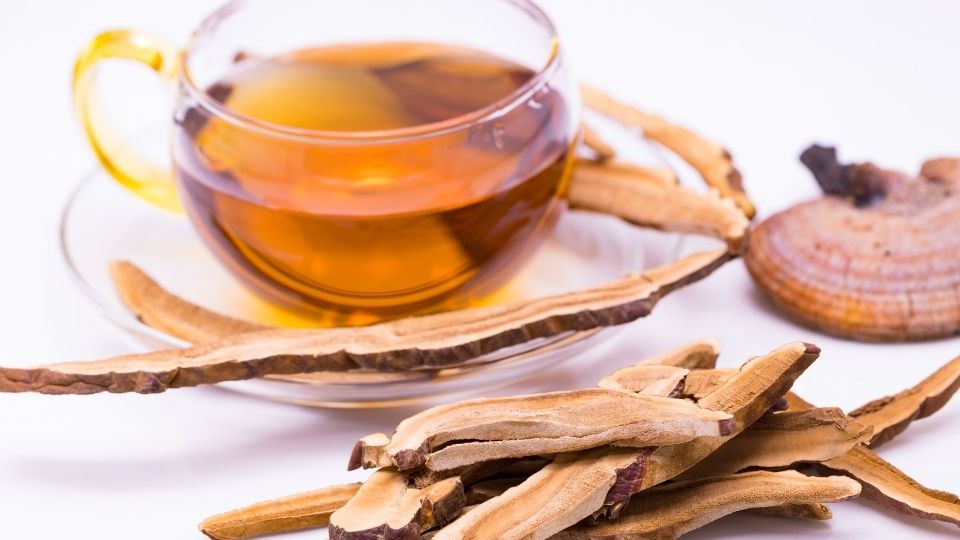
Ancient cultures understood the benefits of medicinal mushrooms even though they didn’t have the science to explain why they worked.
All the way back in the fifth century, an alchemist named Tao Hongjing was responsible for describing several medicinal mushrooms that had been in common use for hundreds of years.[3] Some of the most notable uses of mushrooms as medicine can be found in traditional Chinese healing practices—some of which are still followed today.
Hippocrates singled out Fomes fomentarius for its anti-inflammatory properties in 450 BC, and you can find mentions of various medicinal mushrooms throughout ancient Greek and Roman literature.
Oh, and the Egyptians also included medicinal mushrooms in their hieroglyphics, so clearly there was some reverence for these functional fungi.
Science is Uncovering Healing Mushroom Properties
Mushrooms haven’t quite caught on as treatments in Western cultures yet, but some scientists are beginning to get more serious about their potential benefits.
Some human trials of mushrooms like cordyceps and lion’s mane have been done, usually with small groups, to test out how these compounds might be able to improve health and quality of life. But most studies focus on specific extracts isolated from mushrooms and tested on either animals or cells.
What Types of Medicinal Mushrooms Are There?
Here’s a breakdown of nine amazing mushrooms and their known and potential benefits:
Reishi: Ganoderma lucidum
Bracket or “shelf” fungus; fan-shaped; small or no stem; lacks “gills”.
Improves immunity; reduces anxiety; promotes better sleep*

Chaga: Inonotus obliquus
Black exterior with orange interior; visible part is actually a mass of mycelium.
High in antioxidants; strengthens immunity; improves digestive health*
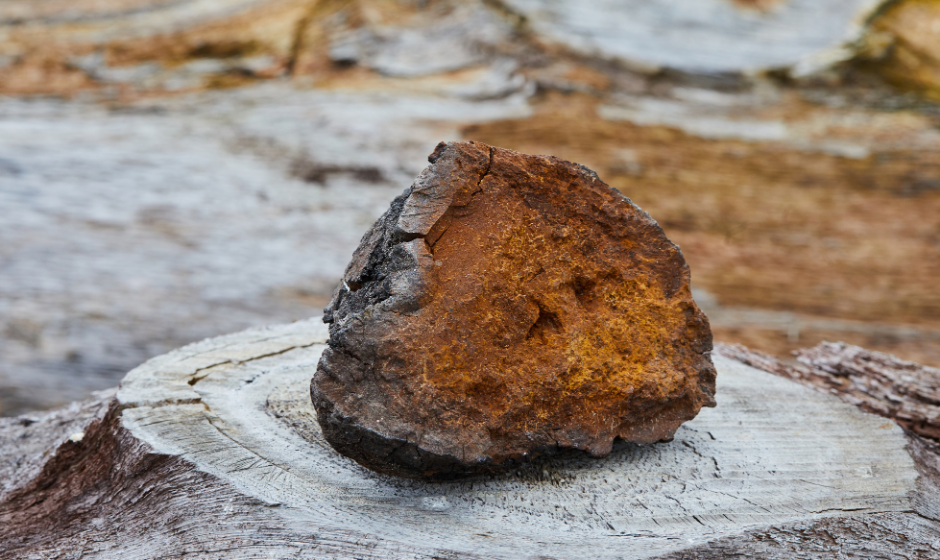
Lion’s mane: Hericum erinaceus
Has a “hairy” or “puffball” appearance.
Improves focus; supports nerve health; use for mood.
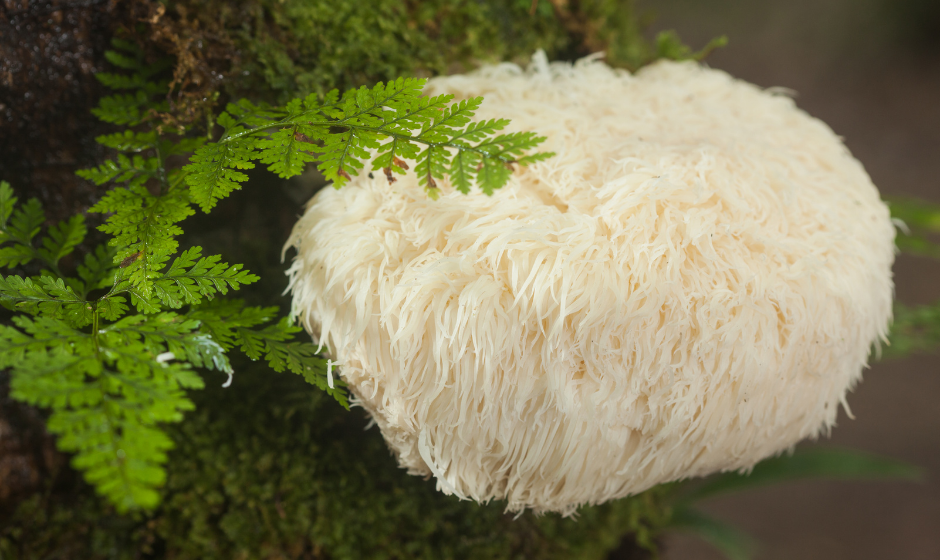
Turkey tail: Trametes versicolor
Grows in fan-shaped clusters that look like feathers.
Boosts immunity; also sometimes used for gut health.*

Cordyceps: C. militaris
Grows parasitically on bugs, but can be easily cultivated on soy and rice.
Increases energy, endurance and exercise performance; supports the body’s response to inflammation.
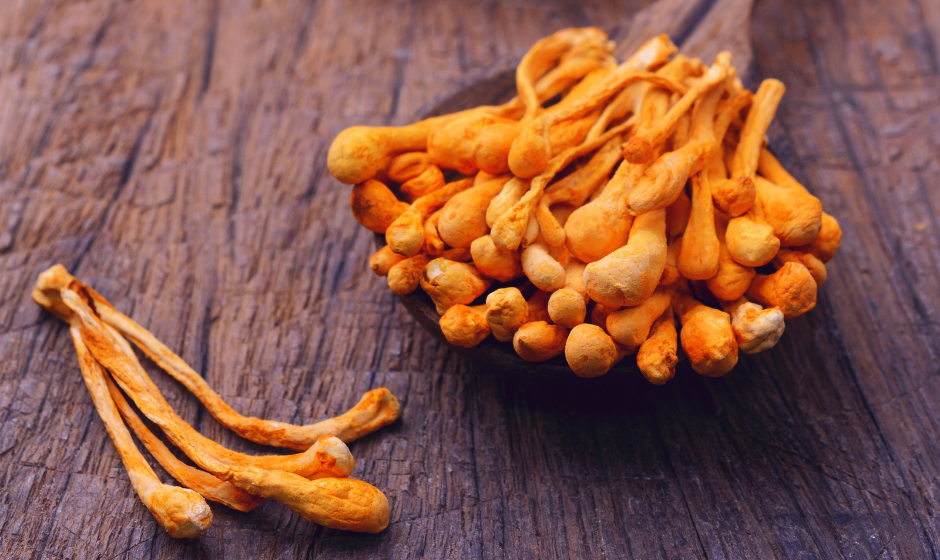
Maitake: Grifola frondosa
Also called “hen of the woods” due to its feathery appearance.
Supports better immunity*
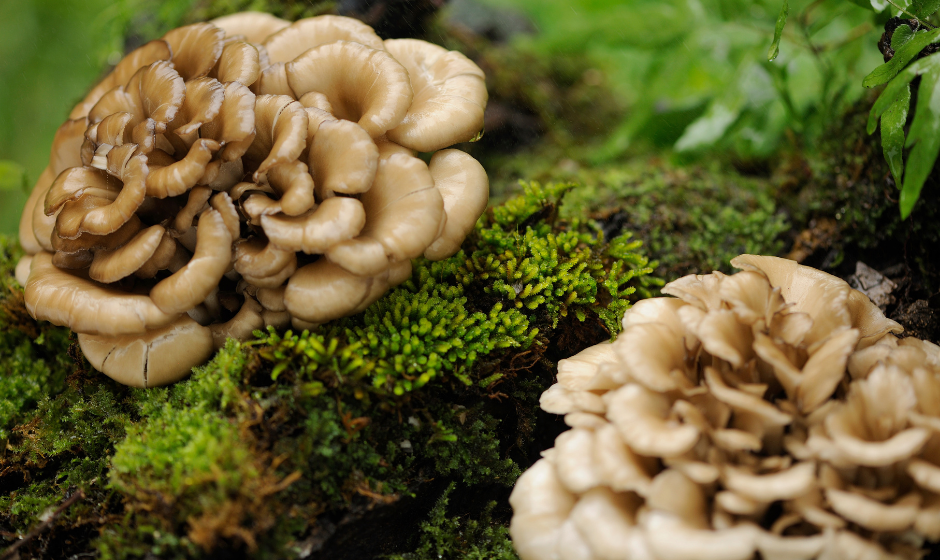
Shiitake: Lentinula edodes
Thin stem with a round, mostly flat cap; commonly included in Asian dishes.
Improves skin health; supports immunity.*
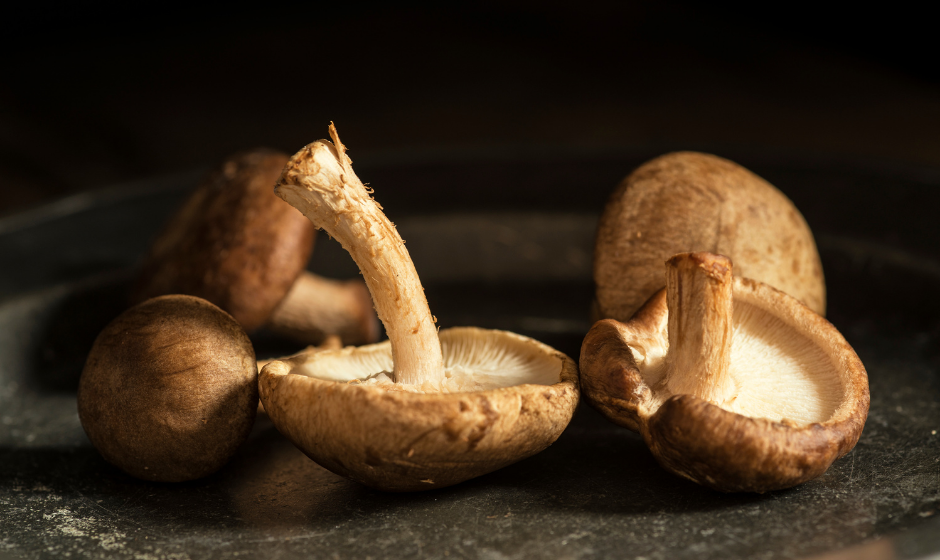
Enoki: Flamulina velutipes
Long and thin with a tiny round cap.
Anti-viral; potentially anti-allergenic.*
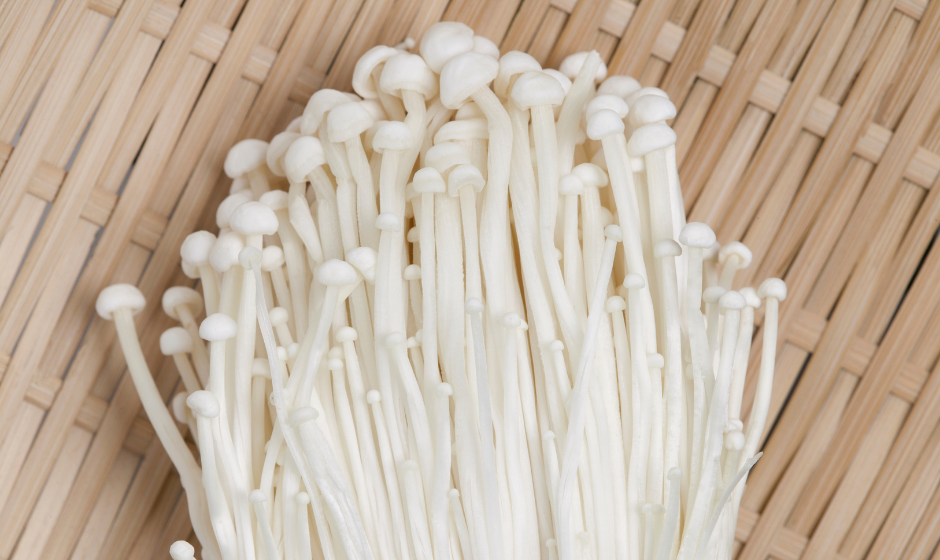
Tremella: Tremella fuciformis
Bears a striking resemblance to a shower pouf!
Anti-aging; promotes healthy skin; may combat brain aging.*
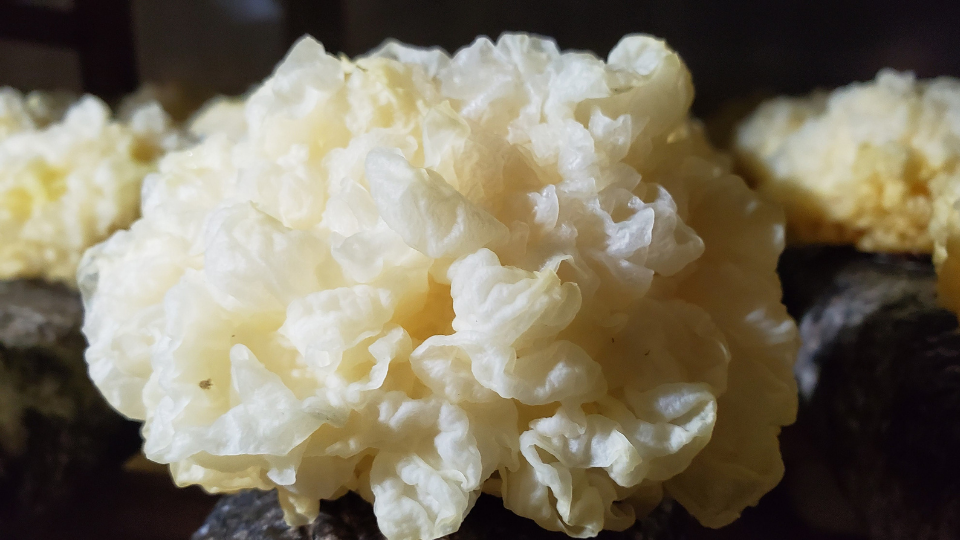
How to Use Medicinal Mushrooms
You can get all the benefits of these healing mushrooms in a few ways:
- Edible varieties—including shiitake, enoki, maitake and lion’s mane—can be purchased fresh and used in recipes to add a burst of flavor and some functional benefits.
- Dried mushrooms can be used to make tea, broth or a base for soups.
- Functional mushroom products like coffee, chocolate, protein powder and elixirs can replace some of the products you currently use in your daily routine.
You’re most likely to find edible and functional mushrooms at Asian markets, in well-stocked natural food stores and online.
Choosing the Best Medicinal Mushroom Supplements
But what if you want to try the benefits of mushrooms that can’t be cooked and eaten (or you’re not ready to have mushrooms invade your morning caffeine ritual)?
Supplements are still the most common—and convenient!—way to use medicinal mushrooms. These can be purchased online from reputable companies or through Amazon. You may also find them at health food stores, supplement stores and food co-ops.
There’s a bit of a catch here, though. Buying a mushroom supplement requires more care and discernment than picking up some shiitakes on your next grocery run.
Not all mushroom supplements are created equal. In the majority of cases, you’ll get the best results from dual-extracted supplements. These include both water- and fat-soluble compounds.
Look for supplements made from fruiting bodies and not mycelium on grain. Mycelium grown on grain brings the grain with it into the final supplement, so you’re mostly paying for starch.
Supplements come in powder, capsule and tincture form. There’s not much difference between them in terms of effectiveness as long as they’re dual extracted from fruiting bodies.
Need more help choosing a mushroom supplement? Get the breakdown between types here.
The ‘Shroomy Bottom Line
Medicinal mushrooms have a long history of use to support and improve human health*. Western science is still catching up with what ancient cultures practiced for centuries, but there are already plenty of ways for you to experience the benefits for yourself.
Whether you go for a functional supplement or are up for some culinary experimentation, medicinal mushrooms are a lot of fun to explore!
